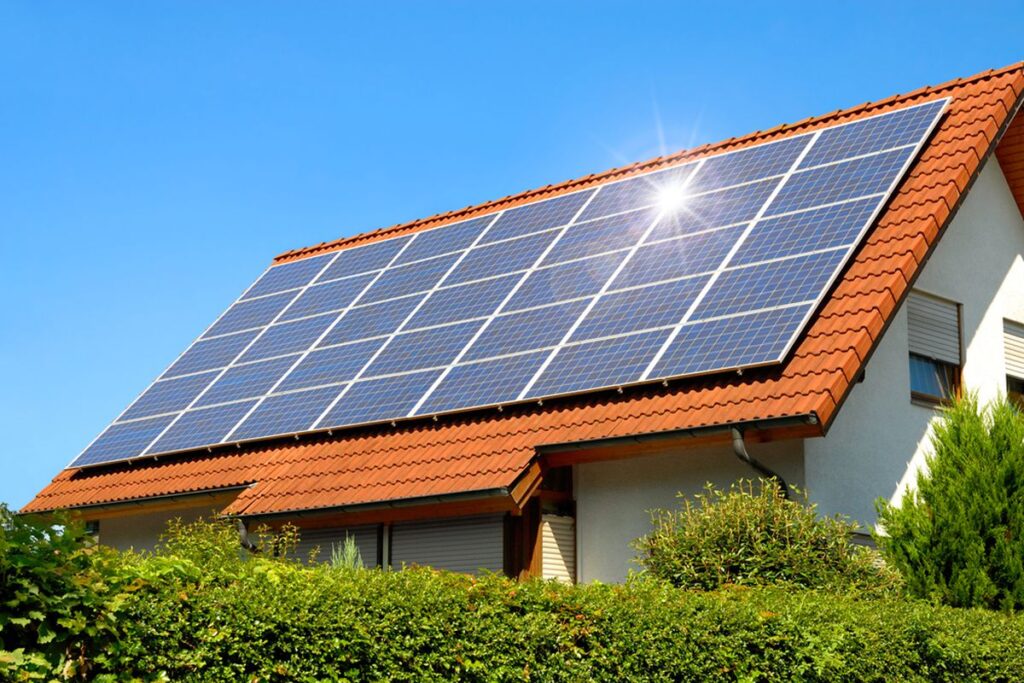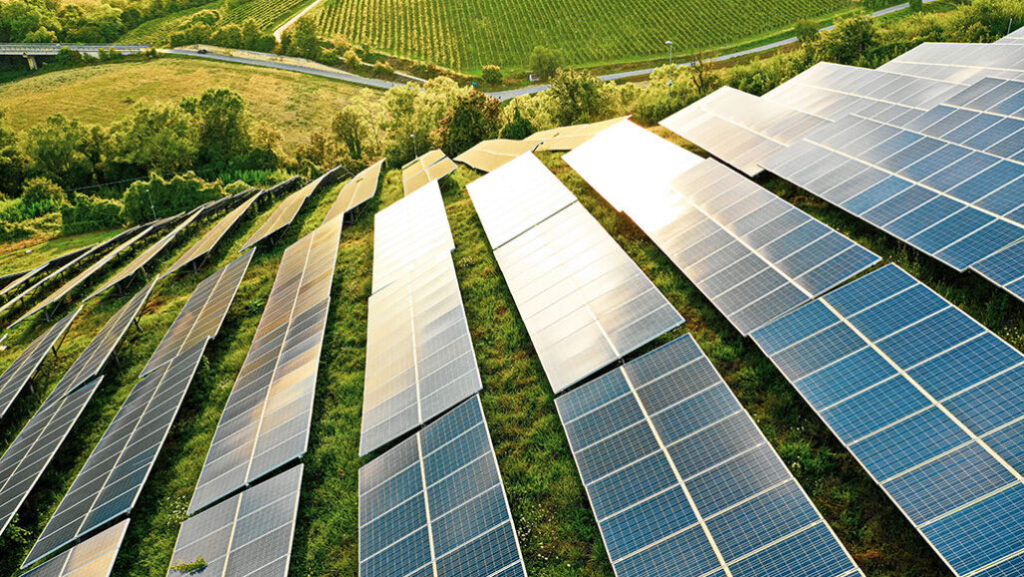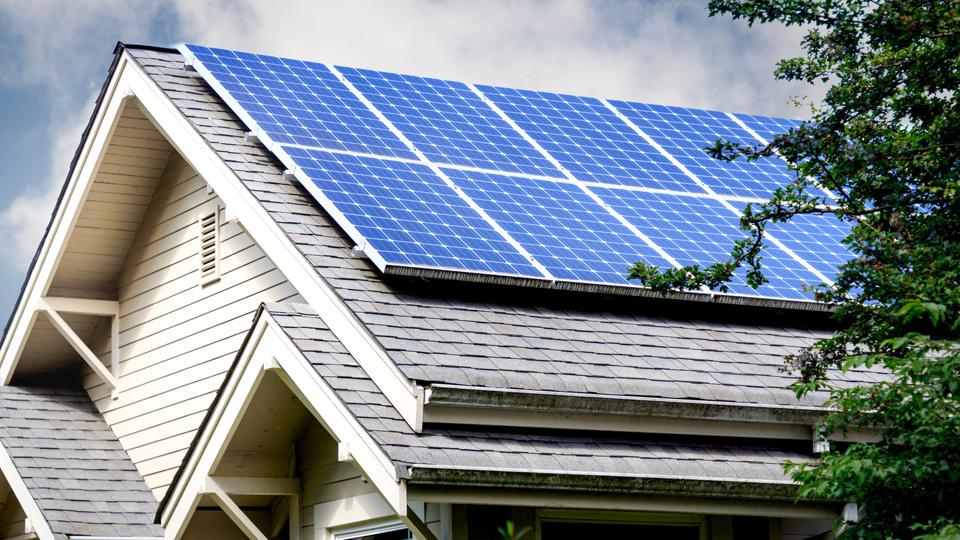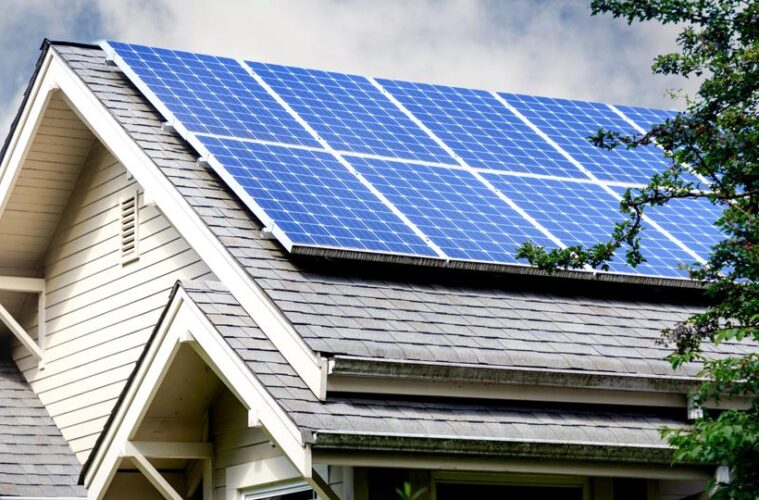>One of the main challenges facing large-scale residential solar power adoption is scale. Solar panels are an architectural challenge, even with new designs on the way, and they are also subject to inefficiency in many older building designs; indeed, as University College London have outlined, most new research is into storage and efficiency in the world of solar panels. In order for new residential builds to really harness their power generating potential, there needs to be a level of inclusion provided in their very design to maximize the potential of that construction in harnessing the sun. An awareness of what the current state of solar panels is, and where they might be going, is an essential first step.
What solar demands

source: pinterest.com
The current run of the most efficient solar panels around are still based on the classic designs available to manufacturers. As climate sustainability experts at EcoWatch highlight, brands including Tesla that are producing main-run solar panels are trying to move towards a model that is inclusive of more exciting designs. For instance, Tesla products have been modelled on flexibility. They are sleek, futuristic looking, and can be applied at a number of surfaces and angles. Certain solar products must be positioned at perfect angles in order to be efficient.
There are innovations in this field. Research reported by the Institute of Electrical and Electronics Engineers shows that ultra-flexible, ultra-thin solar cells are on their way. These raise the potential of multi-surface ‘painting’ – the ability to coat any surface with solar cells, and have them produce small amounts of electricity, regardless of where in the structure they are located. When tied in the electric system, this presents the opportunity for constant passive electricity generation. This – the passive solar house design – is already seeing development, for instance at the Kendada Building in Atlanta, GA. However, this is entirely dependent on the ability of the building and operator to store that energy.
Building in storage

source: sciencenewsforstudents.org
The biggest challenge to widespread solar adoption is storage. The EIA tracks national storage growth across US regions, and this highlights one of the main challenges. Large-scale solar farms struggle due to the lack of available storage cells. This is where new architecture could perhaps help out and create truly passive architecture. Having generation is one thing, but being able to store it will elevate new building designs and help them to achieve their potential. In a recent highlight of solar technology, ArchDaily highlights how storage can, potentially, be built into the very walls of new developments.
There’s two ways of achieving this. Firstly, you can have solar generation that contributes directly to daily running costs. By having power networks that pull energy directly from cells to lighting and devices, you can efficiently power buildings by cutting out the middleman. During night operation, or evening, using devices such as the PowerWall or sonnenCore to efficiently gather solar power is the key. Building efficiency into the process is the crucial element here.
Improving efficiency

source: forbes.com
Underpinning all of this is the need for efficiency. It’s a fact of life that most governments and companies are still profit-driven. There has to be a gain to be made from architects and construction firms in order for them to embrace sustainable building and the ability to become carbon net zero. The overriding way to present this is through efficiency. The impact of energy rate hikes is being felt across the world, and in some regions more keenly than others – in the UK, for instance, energy prices have risen to the point that a cost of living crisis has now been declared.
Businesses have to take a plunge into the unknown by embracing sustainable architecture. The efficiencies are there currently – the price of solar is so cheap compared to energy prices, and there are such huge developments in the world of technology to drive forward the adoption of solar in a way that fits with architecture, that it is rapidly becoming a sensible investment. Build efficiency into architecture means the lifespan will be futureproofed for development in the future, and will ensure that the building continues to deliver on its goals to everyone involved.
Sustainable architecture is a must-have for the future of construction.
That can be seen in many ways, from eco-friendly materials to proper insulation. The next step is passive energy generation, through embracing and promoting solar in every single construction. The technology is cheap, scaleable, and subject to rapid development – so too can the buildings that it adorns. As with all walks of life, true progress can only be made when the people holding the money embrace it. Look forward to that in future years; the efficiency that green architecture provides makes it a no-brainer for the finance managers of big firms.



